The sun quickly makes us look really old. Our slow aging tips for the summer.
The suitcase is packed and you count the hours until you can dig your feet into the warm, soft sand and your skin is kissed by the sun? The price the skin pays for this could be too high. Because photo-aging is the technical term for when we are exposed to the sun without protection and the UV rays cause damage to our skin. This includes the breakdown of collagen, irregular pigmentation, wrinkles and age spots.
There are many different ways to protect our skin and go for slow aging instead of photo aging. The best way is to avoid direct sunlight. But sometimes this can be impossible in the summer. But in addition to the obligatory use of sunscreen creams, science is now finding out how to protect the skin from the inside – slow aging is the name of the game.
How the sun damages the skin
Sunlight has a wide spectrum of wavelengths. Basically there are a) the visible light that we see, b) the infrared radiation we feel and c) ultraviolet (UV) radiation, which we can neither see nor feel.
Most skin cancers – and up to 90% of visible signs of aging – are caused by these two types of UV rays:
- UVB rays: These “burning” rays are responsible for the tan, but also the sunburn and the risk of cancer. Regardless of weather conditions, up to 80% of the rays can penetrate and damage the skin.
- UVA rays: Also known as “aging” rays, these cause less sunburn than UVB rays, but are by no means less dangerous; they penetrate deeper into the skin and can cause photoaging.
Early signs of photo aging
- Burst blood vessels on the nose, cheeks and neck
- Lips that start to lose color, fullness and definition
- Different pigmented spots like freckles, age spots or liver spots
- Wrinkles around the eyes and mouth increase, become deeper
- Red, rough, scaly patches may appear (these may be precancerous and require treatment)
Among other things, photo-aging is blamed on the formation of reactive oxygen compounds, also known as free radicals. Free radicals have one or more unpaired electrons in the shell, which leads to a high reactivity of the molecules. This means that they can easily oxidize other molecules and basically react easily with other substances. And that’s bad for our cells. Free radicals are now seen as primarily responsible for the aging process and as contributors to many chronic diseases.
Slow aging active ingredients from nature
1 OPC – The powerful radical scavenger
OPC is a major component in pine bark extract. Its full name is “oligomeric proanthocyanidin” (OPC for short). This substance from the bark of certain varieties of pine has a strong antioxidant and anti-inflammatory effect. Because science shows that it effectively neutralizes free radicals, prevents mutations at the DNA level and blocks the elastin-destroying enzyme elastase.
OPC works synergistically with vitamin C. Thus, it provides good protection against cell damage. As both a fat-soluble and water-soluble antioxidant, OPC can neutralize many different types of free radicals.This is because it is 18 times more potent than vitamin C at neutralizing free radicals in the body, enhancing the effects of vitamin C and keeping it active for up to ten times longer.OPC is also 40 times more effective than vitamin E in fighting more (different) free radicals.
This versatility makes OPC the most powerful, naturally occurring “radical scavenger”. Studies have found that OPC from pine bark extract helps protect the skin from damage caused by UV rays. 112 women with mild to moderate photodamage to the facial skin were given either or 40 mg or 100 mg of pine bark extract as a supplement once daily. A significant decrease in skin damage was observed in both groups. Un the conclusion: taking pine bark extract as a supplement reduces the symptoms of photoaging and long-term use is useful for improving photodamaged facial skin.(1)
2. superoxide dismutase – natural UV protection
In a randomized, double-blind, placebo-controlled study, SOD from melon extract was shown to have the ability to significantly increase the minimum erythema dose (MED) after one month of oral supplementation.
These results were further supported by a study conducted on human skin explants. SOD showed the ability to prevent the appearance of sunburn cells, lower melanin levels and strengthen the skin’s own antioxidant enzymes.
Clinically proven SOD from melon extract protects skin from UV-induced damage. It is a unique and effective solution for daily protection against the associated premature aging of the skin.
-
Bestseller
Beauty Fuel
Plant-based 4-in-1 formula with GreenIuronic® hyaluronic acid for plump moisture, firm contours and glow from within69,90 €2.306,93 € / kg
3. hyaluronic acid – deep hydration for youthful skin
Hyaluronic acid is a natural component of the skin and ensures optimal moisture retention. It can store up to 1,000 times its own weight in water, making the skin appear firmer and plumper.
👉 Read more about hyaluronic acid and its effects here: Hyaluronic acid capsules: what they can really do
Taking hyaluronic acid capsules can:
- Hydrate the skin from the inside and smooth out dryness lines
- Support collagen production and thus contribute to skin elasticity
- Promote wound healing and reduce inflammation
Clinical studies have shown that taking hyaluronic acid orally for 6-12 weeks significantly improves skin hydration and reduces the signs of ageing. Especially in combination with ceramides, the hydrating effect is enhanced, providing the skin with optimal protection and a longer youthful appearance.
4. ceramides – strengthen the skin’s protective barrier
Ceramides are essential lipids that act as a natural part of the skin barrier and reduce moisture loss. As we age, the ceramide content of the skin decreases, which can lead to dryness, increased sensitivity and fine lines.
👉 Why are ceramides important? Find out in our article Dry skin and wrinkles: It could be ceramide deficiency
Supplementation with ceramides can:
- Improve skin hydration and strengthen the skin’s protective barrier
- Increase skin elasticity and suppleness
- Reduce fine lines and dryness wrinkles
In a study of women aged between 30 and 60, the use of ceramides from wheat extract over 12 weeks led to a significant improvement in skin hydration and a visible reduction in dryness lines. Ceramides work from the inside out and help to maintain the skin structure in the long term.
Finally, a few slow aging tips
- Try to limit time in the sun – especially between 10 a.m. and 2 p.m., when the sun’s rays are strongest.
- Wear clothing that covers exposed skin, such as long-sleeved shirts, pants, sunglasses and hats.
- UV rays can reach you even when it’s cloudy or when you’re indoors. That’s why it’s best to apply sunscreen every day.
- OPC from pine bark extract and superoxide dismutase (SOD) from melon extract protect the skin from free radicals and UV damage.
- SOD also supports the skin’s natural protection against the sun.
- Ceramides and hyaluronic acid help to strengthen the skin barrier and retain moisture – ideal for sun-stressed skin.
- Read more about summer and nutrients here:
Incidentally, your skin also protects itself in line with the natural circadian rhythm. According to the Chinese organ clock, your liver is particularly active at night – it neutralizes toxins and helps to break down free radicals caused by UV rays. Restful sleep and nightly skincare routines therefore have a double effect: they help your skin to regenerate and promote slow ageing from the inside out.
Store the Story
-
Bestseller
Beauty Fuel
Plant-based 4-in-1 formula with GreenIuronic® hyaluronic acid for plump moisture, firm contours and glow from within69,90 €2.306,93 € / kg
-
Set 2x Beauty Fuel | Skin Radiance Complex
2-pack Bio Skin Radiance Complex - with Greenluronic® for more moisture, glow and slow aging from within118,90 €139,80 €2.306,93 €1.962,05 € / kg

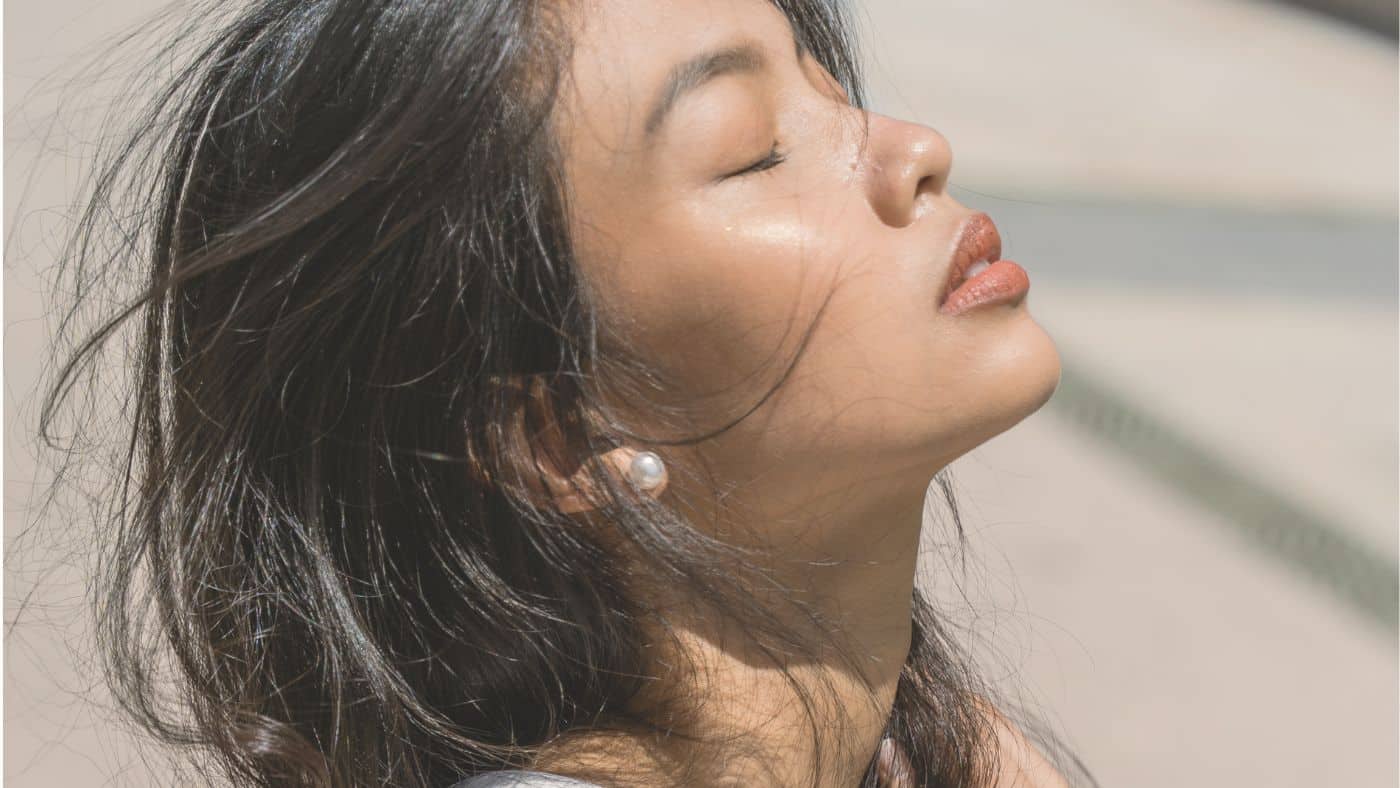
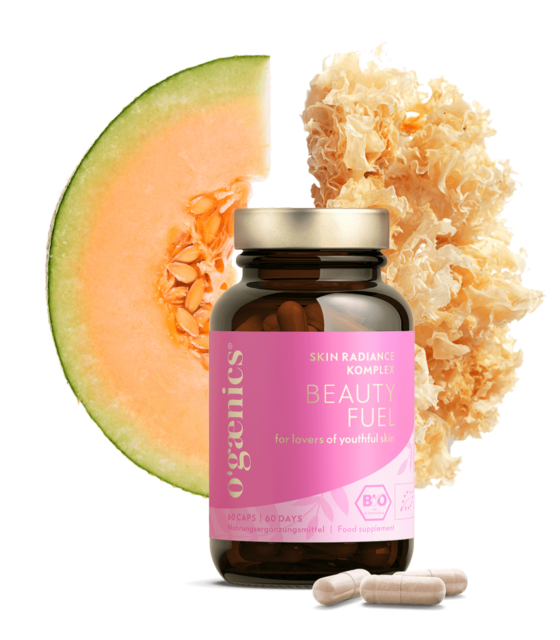
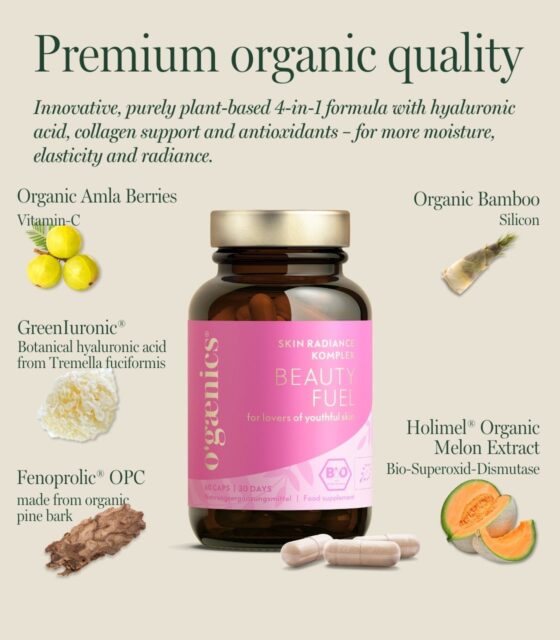
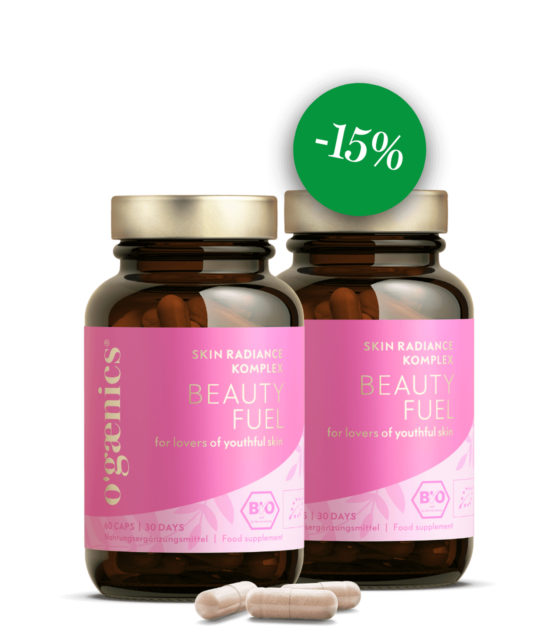
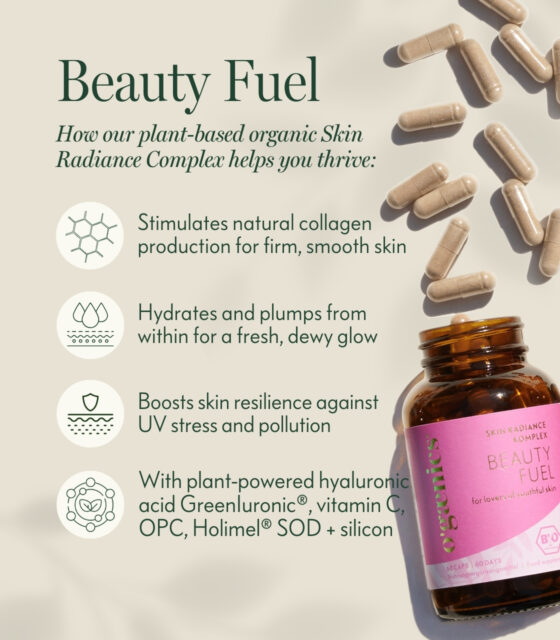
 No products in the cart.
No products in the cart.